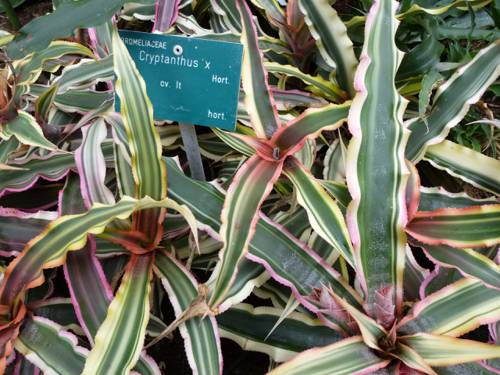
FAQ About Indoor Plant Breeding and Hybridization

What is indoor plant breeding?
Indoor plant breeding involves the selective mating or crossing of specific plants to produce new varieties with desired characteristics. This can include traits like more vibrant colors, unique leaf patterns, improved resilience, or enhanced growth rates, all tailored for indoor environments.

How does hybridization differ from indoor plant breeding?
Hybridization is a form of plant breeding where two genetically different species or varieties are crossed to produce a hybrid. While plant breeding is an overarching term that encompasses various techniques like hybridization, hybridization specifically focuses on creating a new plant by mixing genetic material from different sources to achieve desirable traits.

What are some common goals of indoor plant hybridization?
Common goals of indoor plant hybridization include creating plants with unique ornamental features, such as exotic leaf colors or patterns, developing hardier plants that require less care, or plants that can thrive in lower light conditions. Other objectives may involve disease resistance or increased tolerance to temperature extremes.

How can I start hybridizing my indoor plants at home?
To start hybridizing plants at home, begin by selecting healthy parent plants with desirable traits. Use tools like a small brush to manually transfer pollen from the flower of one plant to the stigma of another. Once successful fertilization occurs, the developing seeds can be grown under controlled conditions to produce the hybrid plant.

What tools are needed for indoor plant hybridization?
Tools needed for indoor plant hybridization include small brushes or cotton swabs for pollen transfer, magnifying glasses to examine plant reproductive parts closely, labels to track different crosses, and containers for germinating seeds. Some growers may also use controlled environment setups like terrariums or greenhouses.

Can all indoor plants be used for breeding and hybridization?
Not all indoor plants are suitable for breeding and hybridization. The ability to hybridize depends on the plant's genetic compatibility, flowering characteristics, and reproductive biology. Generally, plants within the same genus are more likely to successfully hybridize. Additionally, some plants may be patented, restricting breeding efforts legally.

What are some popular indoor plants used for breeding?
Popular indoor plants often used for breeding include African violets, orchids, various types of succulents, and hoyas. These plants are favored for their diverse colors, shapes, and relatively manageable growth patterns, making them appealing for enthusiasts aiming to create unique hybrids.

Are there risks involved in indoor plant hybridization?
Risks in indoor plant hybridization include the potential for unsuccessful crosses that lead to sterile or non-viable offspring, the introduction of undesirable traits, or the lack of vigor in hybrids. Additionally, there may be legal or ethical concerns regarding the modification of plants protected under patents.

What is the role of genetics in plant breeding and hybridization?
Genetics play a crucial role in plant breeding and hybridization as they determine the traits that can be passed on to offspring. By understanding the genetic makeup of parent plants, breeders can predict the likelihood of desired characteristics appearing in the new hybrids.

How do breeders select parent plants for hybridization?
Breeders select parent plants based on desired traits such as color, shape, growth habits, and resistance to pests or diseases. The overall health and genetic compatibility of the plants are also considered, as well as environmental tolerance to ensure the success of hybrids in targeted conditions.

Can hybrid plants revert to their parent types?
Hybrid plants generally do not revert to their parent types through asexual reproduction, as they inherit a mixed set of genetic traits. However, if hybrid seeds are planted, they may not consistently exhibit parental traits due to genetic recombination, resulting in varied offspring.

How long does it take to produce a new hybrid indoor plant?
The time it takes to produce a new hybrid indoor plant can vary widely depending on the species involved and breeding conditions. Generally, it can take several months to years from the initial cross-pollination to see mature plants displaying the full range of desired traits.

What is cross-pollination and how is it relevant to indoor plants?
Cross-pollination is the process of transferring pollen from the flower of one plant to the flower of another plant, leading to the production of seeds with mixed genetic material. It is a fundamental method used in hybridization to create indoor plants with new or improved traits.

What are F1 hybrids in indoor plant breeding?
F1 hybrids are the first generation offspring resulting from the crossbreeding of two genetically distinct parent plants. These hybrids often exhibit traits from both parents and can have enhanced vigor or specific desired characteristics. They are commonly used to introduce hybrid vigor or heterosis in indoor plants.

Can hybrid indoor plants be cloned?
Yes, hybrid indoor plants can often be cloned using methods such as cuttings, tissue culture, or layering. These techniques allow growers to reproduce identical copies of a successful hybrid, preserving its unique traits without the genetic variability introduced by seed propagation.

Why might a breeder backcross a hybrid plant?
A breeder might backcross a hybrid plant by crossing it with one of its original parent plants to reinforce specific desirable traits or to increase genetic stability within the hybrid. This technique is often used to refine and enhance desired characteristics seen in the original hybrid generation.

Can hybridization affect the health of indoor plants?
Hybridization can positively or negatively affect the health of indoor plants. It can result in hybrids with improved disease resistance or adaptability, but it may also introduce weaknesses such as reduced fertility or increased susceptibility to certain environmental stresses.

What is sterile offspring in the context of plant hybridization?
Sterile offspring in plant hybridization refer to hybrids that do not produce viable seeds. This can occur when the parent plants are too genetically divergent, resulting in offspring that are unable to reproduce naturally. Sterile hybrids can still be propagated through asexual methods.

How important is the environment in indoor plant hybridization?
The environment is critically important in indoor plant hybridization, as factors such as temperature, light, humidity, and soil conditions can all affect the success of cross-pollination, seed germination, and growth of hybrid plants. Controlled environments can enhance the chances of successful hybridization.

Are there legal considerations in breeding hybrid indoor plants?
Yes, there are legal considerations in breeding hybrid indoor plants. Some plant varieties may be protected by patents or plant breeders' rights, which can limit or prohibit the use of those plants in breeding programs without permission. It's important to check for any such restrictions before engaging in hybridization efforts.
